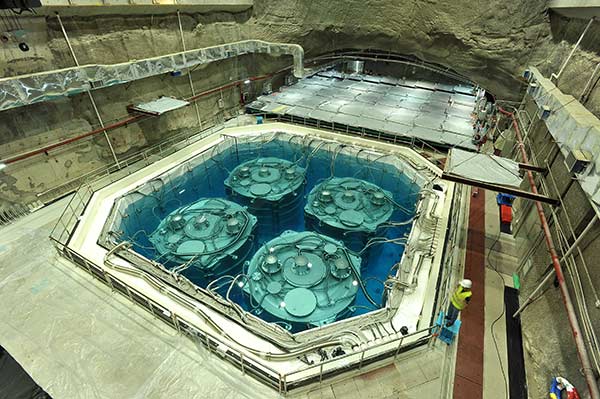Big future for small particle
Updated: 2015-12-28 08:20
By Cheng Yingqi(China Daily)
|
||||||||
|
The neutrino experimental facility at Daya Bay will be replaced by a new facility in Jiangmen, Guangdong province, by 2020. Xinhua |
China is rapidly claiming a place among global leaders in the field of neutrino research, as Cheng Yingqi reports.
For physicists, 2015 has been the year of the neutrino. The minuscule subatomic particle, which is crucial to our understanding of the origins of the universe, is being studied at laboratories across the world, but especially in China.
Earlier this year, the government launched a new neutrino experimental facility project in Jiangmen city, Guangdong province, to replace the existing Daya Bay Reactor Neutrino Experiment by 2020, with the aim of ranking the masses of the three different types of neutrinos. Although the particle itself is neutral, it is part of a "trinity" consisting of three types of neutrino - the electron, muon and tau neutrinos. Under certain circumstances, each type can transform itself into one of the other two.
With a budget of 2 billion yuan ($310 million), the Jiangmen Underground Neutrino Observatory, also known as JUNO, will dwarf the Daya Bay project - an international collaboration conducted by several countries and regions - by a factor of about 100.
"We were just lucky in the case of the Daya Bay experiment. We invested less money but made a significant breakthrough in a short time, but this (making a breakthrough so quickly) is unrepeatable," said Wang Yifang, director of the Institute of High Energy Physics at the Chinese Academy of Sciences, who led the Daya Bay neutrino experiment.
Although the Daya Bay team, based 52 kilometers northeast of Hong Kong and 45 km east of Shenzhen in Guangdong, included physicists from a number of countries and regions, including China, the United States and Russia, more than 60 percent of the funding came from the Chinese mainland.
For the JUNO project, however, the Chinese government will provide 80 percent of the investment, with the rest coming from European countries, including France and Italy, whose scientists did not participate in the Daya Bay experiment. Instead, they were involved with a competing project in France called Double Chooz, construction of which was completed in September last year.
"The reason we chose to build the facility in Jiangmen is that its unique mountain landform is adjacent - approximately 50 km - to a nuclear power plant that can provide us with a free source of neutrinos," Wang said.
The overall design of the Jiangmen experiment incorporates many features from Daya Bay, but also includes several key technological advancements. "We cannot afford failure if we meet with major setbacks when trying to build such a huge facility from zero. However, we now already have the experience of working at Daya Bay, so we feel confident," Wang said.
China was a latecomer in the field of neutrino research. The facilities at Daya Bay did not start operating until late 2011. Just four months later, the team announced an astonishing discovery: a new form of neutrino oscillation - the process by which the particle morphs into one of its three forms - a mystery left unsolved by two previous Nobel Prize winners, which were only partially successful in explaining neutrino transformation.
- More aid from China set for Syria
- Japanese journalist reportedly being held in Syria
- New York City has warmest Christmas Eve on record
- One dead as fight leads to fatal shooting at North Carolina mall
- Trump's lead bodes well for Hillary Clinton's presidential bid
- Spanish Socialist leader insists no support for Rajoy
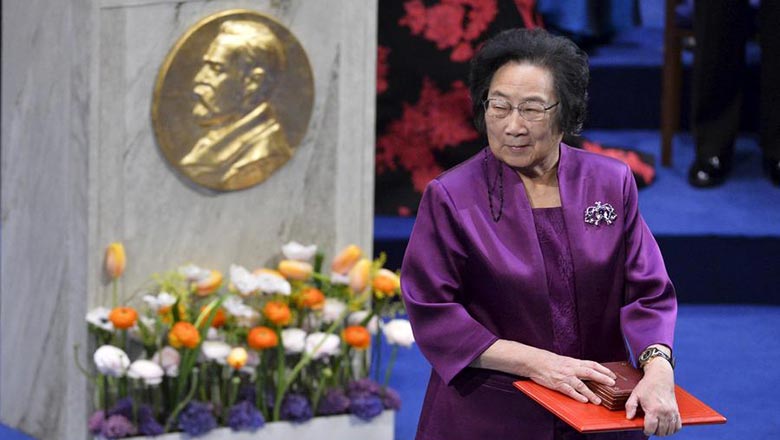
 China's top scientific achievements in 2015
China's top scientific achievements in 2015
 Yearend 2015: A picture and its story
Yearend 2015: A picture and its story
 Christmas celebrated across the world
Christmas celebrated across the world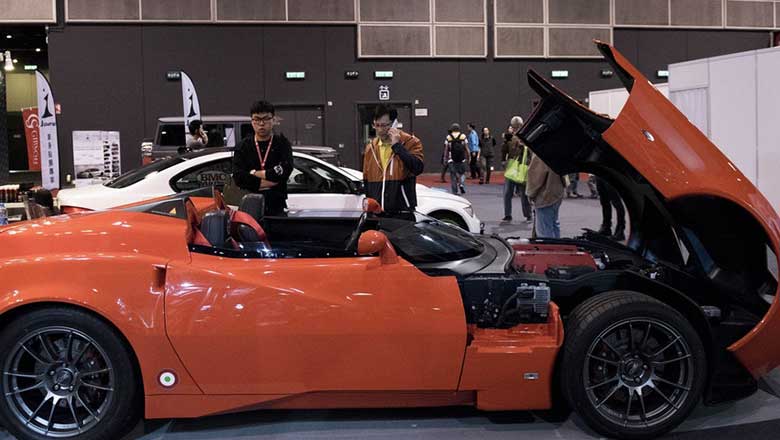
 HK car show kicks off during Christmas season
HK car show kicks off during Christmas season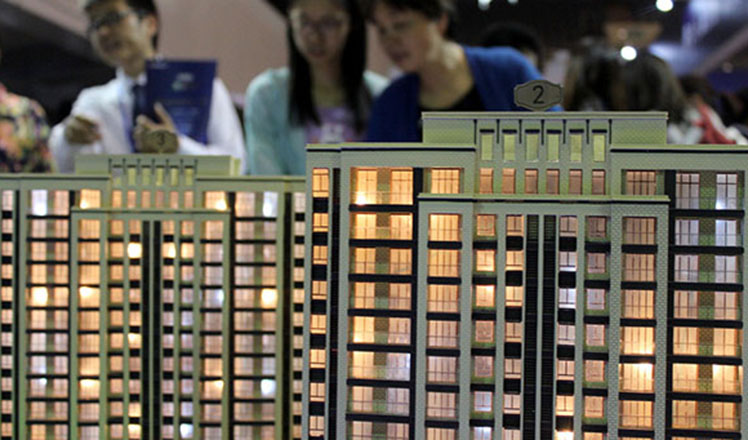
 10 major economic policies that will make a difference on lives
10 major economic policies that will make a difference on lives
 Santa Claus is busy in China
Santa Claus is busy in China
 Yearend 2015: Heartstopping images captured by daredevils
Yearend 2015: Heartstopping images captured by daredevils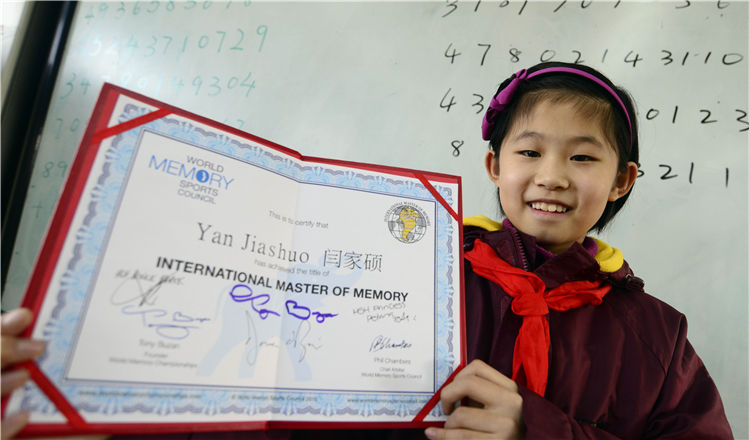
 Girl becomes youngest Master of Memory
Girl becomes youngest Master of Memory
Most Viewed
Editor's Picks

|

|

|

|

|

|
Today's Top News
Shooting rampage at US social services agency leaves 14 dead
Chinese bargain hunters are changing the retail game
Chinese president arrives in Turkey for G20 summit
Islamic State claims responsibility for Paris attacks
Obama, Netanyahu at White House seek to mend US-Israel ties
China, not Canada, is top US trade partner
Tu first Chinese to win Nobel Prize in Medicine
Huntsman says Sino-US relationship needs common goals
US Weekly

|

|
